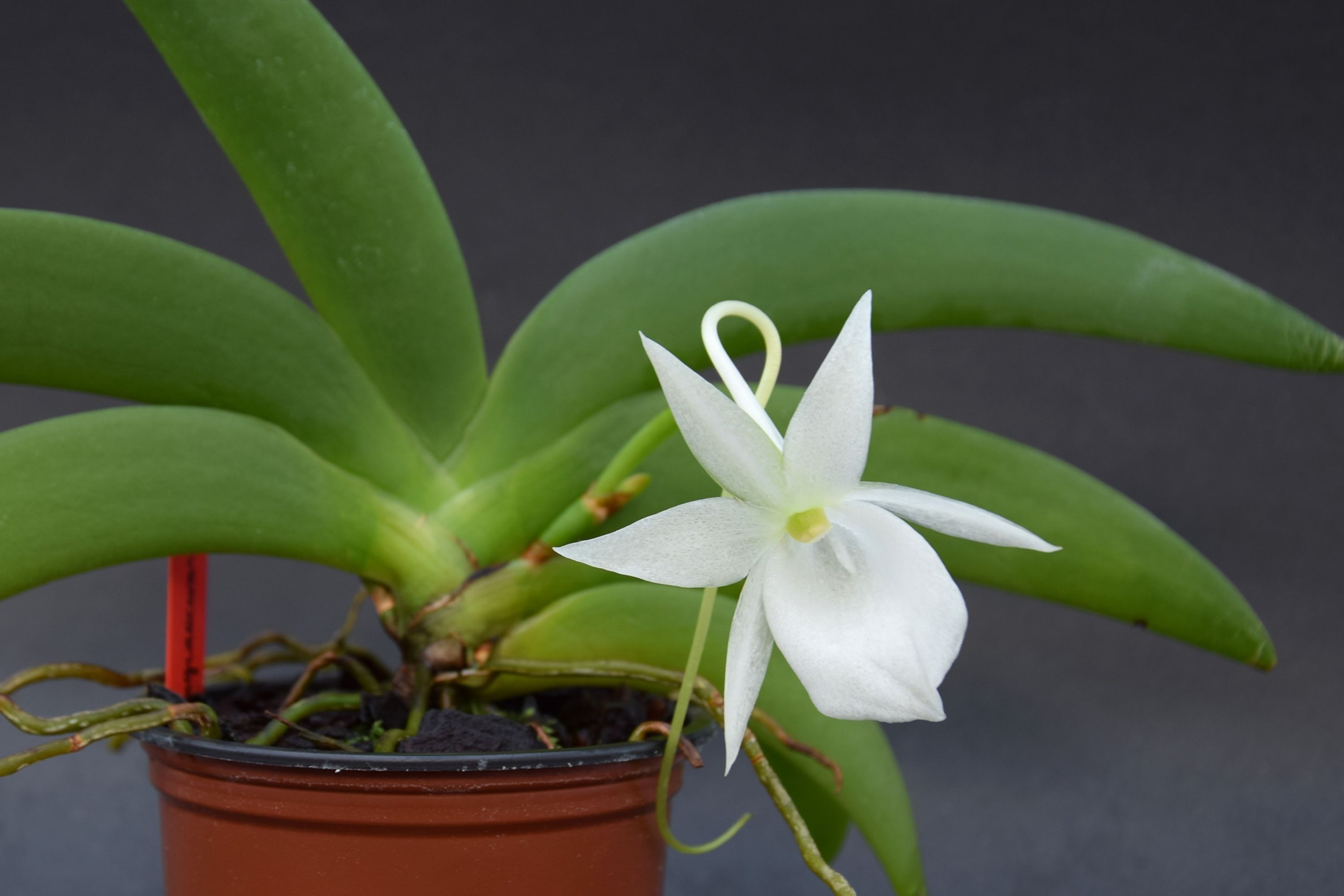Angraecum leonis
(Angraecum leonis)

Description
Angraecum leonis is a species of flowering plant in the Orchidaceae family. The orchid propagated around 1922 by Ms. Edith Watson (18 November 1895 – 1 May 1967) of Home Farm, Woburn, England. It was named in honor of Sir Herbert Leon, her father James Telford Watson's employer at Bletchley Park, Buckinghamshire, where he was Estate Manager at the time. Sir Herbert gave Edith Watson a book entitled "Orchids, their culture and management" by Watson and Chapman, on June 26, 1918, when she was 23 years of age. She won a Cultural Bronze Medal and F.C. Botanical Certificate at the Manchester and A.M.London show of 1922. She also propagated another orchid which she named Odonto. Crispum var. Colin, in honour of her eldest son Colin Barrow (b 1919). Her daughter was Jean Barrow, later to work at Bletchley Park during World War II. Edith Watson is buried at Olney Cemetery. The genus Angraecum, abbreviated as Angcm in horticultural trade, common name Angrek (Indonesian and Malay) or comet orchid, contains about 220 species. They are quite varied vegetatively and florally and are adapted to dry tropical woodland habitat and have quite fleshy leaves as a consequence. Most are epiphytes, but a few are lithophytes. The long-lasting flowers are racemose and grow from the leaf axils. They are mostly white, but a few are yellow, green or ochre. They all have a long spur at the back of the labellum (lip). In the case of Angraecum sesquipedale, a species from Madagascar, on observing the 30 centimetres (12 in) spur in the lip, Charles Darwin made the hypothesis that, since the nectar was at the bottom of the spur, a pollinator must exist with a tongue at least that long. Otherwise the orchid could never be pollinated. At the time, he was not believed. However, in 1903, the predicted pollinator was discovered, a hawk moth then named Xanthopan morganii praedicta ("praedicta" meaning "the predicted one"). It has an appropriately long proboscis. The specific name sesquipedale means "one foot and a half", referring to the length of the spur. This is an example of mutual dependence of an orchid and a specific pollinator. Tropical Africa and Madagascar contain the majority of the genus with one outlier found on Sri Lanka, and three species once thought to belong to the genus in Japan and the Philippines. But these orchids can also be found on the Comoros, the Seychelles, and the Mascarenes. They occur between sea level and 2,000 metres (6,600 ft) in humid regions.
Taxonomic tree:







